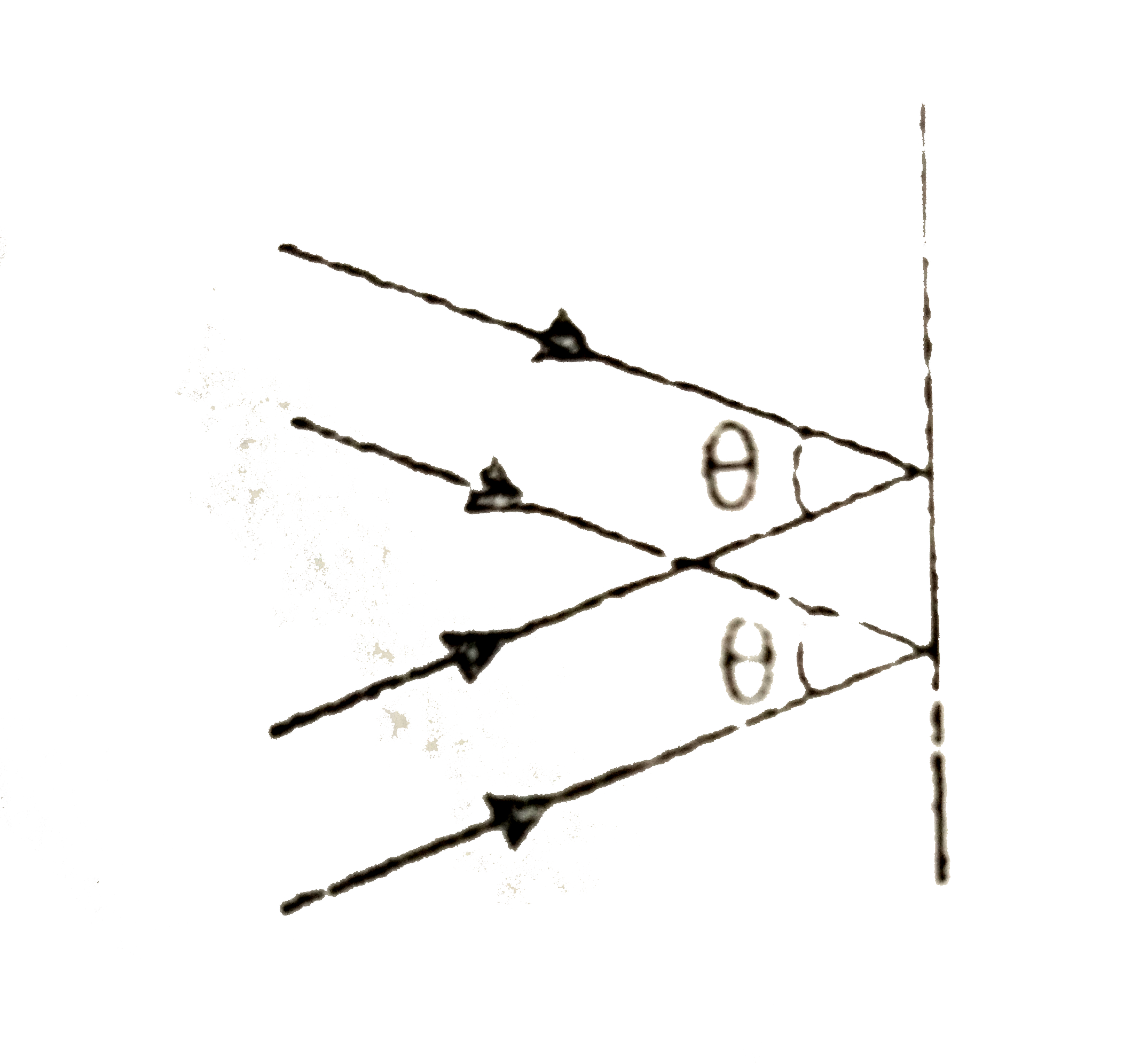A parallel beam of ligth of intensity I and cross section area S is incident on a plate at normal incidence. The photoelectric emission efficiency is 100%, the frequency of beam is v and the work function of the plate is ϕ(hv>ϕ). Assuming all the electrons are ejected normal to the plane and with same maximum possible speed. The net force exerted on the plate only due to striking of photons and subsequent emission of electrons is
IShv(2hλ+√2m(hv−ϕ))
2IShv(hλ+√2m(hv−ϕ))
IShv(hλ+√2m(hv−ϕ))
2IShv(hλ+√m(hv−ϕ))
The correct Answer is:C
I=(dndt)hvS⇒dndt=IShv=number of photon falling per second =number of electrons emitted per second from the metal (∵ efficiency of emission is 100%)
Force on the plate due to the absorption of photos is F1=dn×pdt=dndt×hvc=ISc
Force on the plane due to the ejection of electrons from it is F2=dndt√2mKE=IShv√2m(hv−ϕ)
∴ Total force on the metal =F1+F2=ISc+IShv√2m(hv−ϕ)
=hIShvλ+IShv√2m(hv−ϕ)=IShv[hλ+√2m(hv−ϕ)]
Topper's Solved these Questions
- DUAL NATUREBook:NARAYNAChapter:DUAL NATUREExercise:LEVEL-I(H.W)
Explore 7 Videos
- DUAL NATUREBook:NARAYNAChapter:DUAL NATUREExercise:LEVEL-I (H.W)
Explore 7 Videos
- DUAL NATUREBook:NARAYNAChapter:DUAL NATUREExercise:LEVEL-V
Explore 31 Videos
- DUAL NATURE OF RADIATION AND MATTERBook:NARAYNAChapter:DUAL NATURE OF RADIATION AND MATTERExercise:ASSERTION AND REASON
Explore 15 Videos
- ELECTRIC CHARGES AND FIELDSBook:NARAYNAChapter:ELECTRIC CHARGES AND FIELDSExercise:EXERCISE -4
Explore 43 Videos
Similar Questions
Light of intensity I and frequency v is incident on a photossensitive surface and causes photoelectric emission. Justify with the help of graph, the effect on photoelectric current when
the anode potential is increased
In each case, all other factors remain the same.
View SolutionIn a photoelectric experiment a parallel beam of monochromatic light with power of 200 is incident on a perfectly absorbing cathode of work function 6.25. The frequency of light is just above the threshold frequency so that the photoelectrons are emitted with negligible kinetic energy. Assume that the photoelectron emission efficiency is 100%. A potential difference of 500 is applied between the cathode and the anode. All the emitted electrons are incident normally on the anode and are absorbed. The anode experiences a force 10 due to the impact of the electrons. The value of is __________. Mass of the electron 910 and 1.01.610.
View Solution
Knowledge Check
Two parallel beams of light of wavelength λ inclined to each other at angle θ(<<1) are incident on a plane at near normal incidence. The fringe width will be :
 Aλ2θB2θθCλθD2λsinθ
Aλ2θB2θθCλθD2λsinθIf the work function of a metal is 'ϕ' and the frequency of the incident light is 'v', there is no emission of photoelectron if
Av<ϕhBv=ϕhCv>ϕhDv≥ϕhRadiations of intensity 0.6Wm−2 are incident on a non - reflecting plate. The pressure exerted on the plate by the radiation is
A2×10−9PaB1.8×108PaC4×10−9PaD2×10−8Pa
Light of intensity I and frequency v is incident on a photossensitive surface and causes photoelectric emission. Justify with the help of graph, the effect on photoelectric current when
the frequency of incident radiation is increased
all other factors remain the same.
View SolutionIn photoelectric emission from a metal, work function ϕ0 and threshold frequency v0 are related as _____.
View SolutionFor photoelectric emission from certain metal the cut - off frequency is v. If radiation of frequency 2v impinges on the metal plate , the maximum possible velocity of the emitted electron will be (m is the electron mass).
View SolutionA beam of ligth having frequency v is incident on an initially neutral metal or work function ϕ(hv>ϕ). Then
View SolutionA parallel beam of monochromatic unpolarised light is incident on a transparent dielectric plate of refractive index 1√3. The reflected beam is completely polarised . Then the angle of incidence is
View Solution
